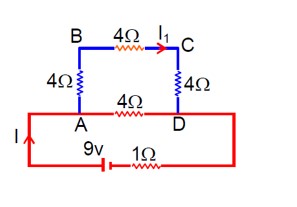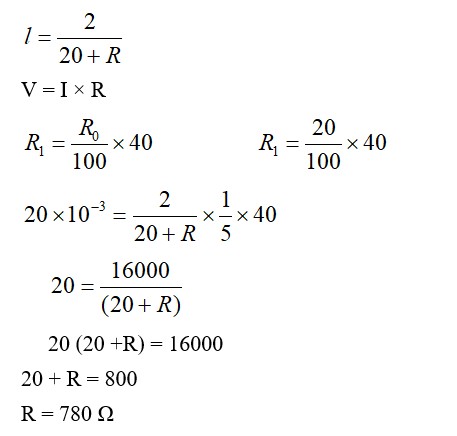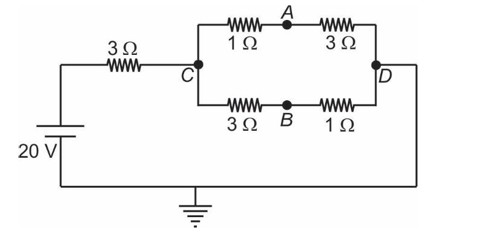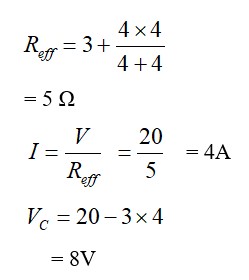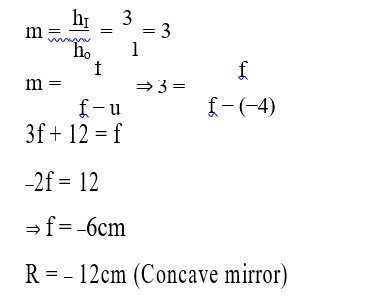A 16Ω wire is bend to form a square loop. A 9V supply having internal resistance of 1Ω is connected across one of its sides. The potential drop across the diagonals of the square loop is __________ x 10?¹ V.
A 16Ω wire is bend to form a square loop. A 9V supply having internal resistance of 1Ω is connected across one of its sides. The potential drop across the diagonals of the square loop is __________ x 10?¹ V.
-
1 Answer
-
Each side of the square has a resistance of 16/4 = 4Ω.
The side AC has the 9V, 1Ω source.
The other three sides (AB, BD, DC) form a path with resistance 4+4+4 = 12Ω.
This is in parallel with the side AC (4Ω).
Total resistance of the loop part: (12×4)/ (12+4) = 48/16 = 3Ω.
Total resistance of the circuit: R_total = 3Ω + 1Ω (internal) = 4Ω.
Total current from source I = V/R_total = 9/4 A.
This current splits.
Current through path ABDC, I? = I × (R_AC / (R_ABDC + R_AC) = (9/4) × (4/16) = 9/16 A.
Potential at B: V_B = V_A - I? R_AB = 9 - (9/16)×4 = 9 - 9/4 = 27/4 V.
Potential a...more
Taking an Exam? Selecting a College?
Get authentic answers from experts, students and alumni that you won't find anywhere else
Sign Up on ShikshaOn Shiksha, get access to
- 65k Colleges
- 1.2k Exams
- 679k Reviews
- 1800k Answers
